Table of Contents
Introduction:
As electric scooters evolve into sophisticated and essential components of urban transportation, the technology powering these devices continues to advance at a remarkable pace. Central to these advancements are the operating systems (OS) that manage the scooter’s functionality, from basic operations like speed control and battery management to complex tasks such as real-time navigation and connectivity with other smart devices. Understanding the different types of OS available for electric scooters is crucial for making informed decisions, whether you’re a rider looking for a seamless experience, a developer aiming to innovate, or an enthusiast keen on the latest technological trends.
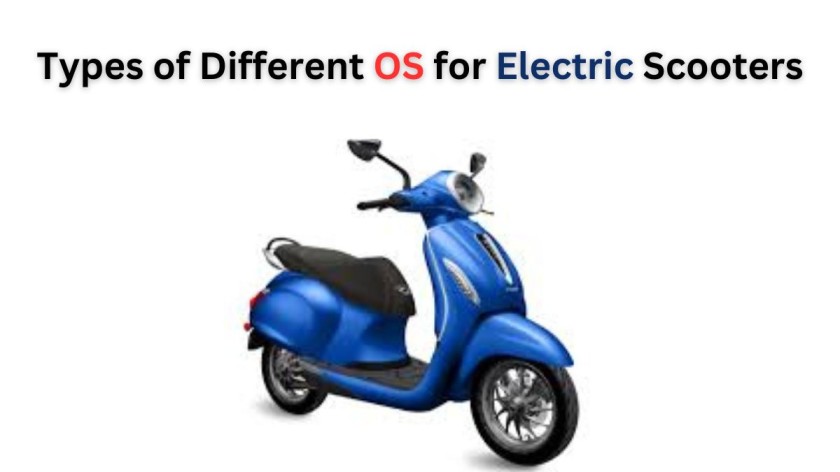
The right OS can significantly enhance a scooter’s performance, ensure robust security, and offer a superior user experience. In this comprehensive guide, we will delve into the various operating systems used in electric scooters, examining their features, benefits, and potential drawbacks. By gaining insights into these OS types, you will be better equipped to choose the most suitable one for your needs, ensuring a safe, efficient, and enjoyable ride.
List of Different OS for Electric Scooters:
(1) Embedded Operating Systems:
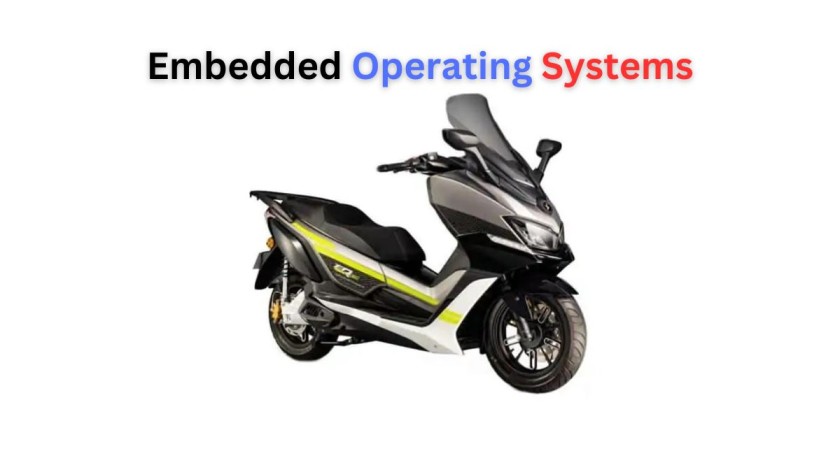
Embedded operating systems are intricately designed to oversee and regulate the specialized hardware functions of electric scooters. These custom-built systems are finely tuned to deliver optimal efficiency and real-time performance, thereby making them well-suited for the precise control of critical features including speed regulation, battery management, and motor control.
Pros:
- Highly efficient: Embedded OS are designed to perform specific tasks efficiently, making them well-suited for controlling hardware components in electric scooters without unnecessary overhead.
- Real-time performance: These systems can handle real-time tasks, such as adjusting motor speed or managing battery usage, with minimal delay, ensuring smooth operation.
- Customizable for specific hardware: Embedded OS can be tailored to match the exact specifications and requirements of the scooter’s hardware.
Cons:
- Limited flexibility for updates and upgrades: Once deployed, embedded systems are harder to update, which can be a drawback if new features or security updates are needed.
- Typically proprietary: Many embedded OS are proprietary, which can limit the ability to modify or extend the system without the manufacturer’s support.
(2) Linux-Based Operating Systems:
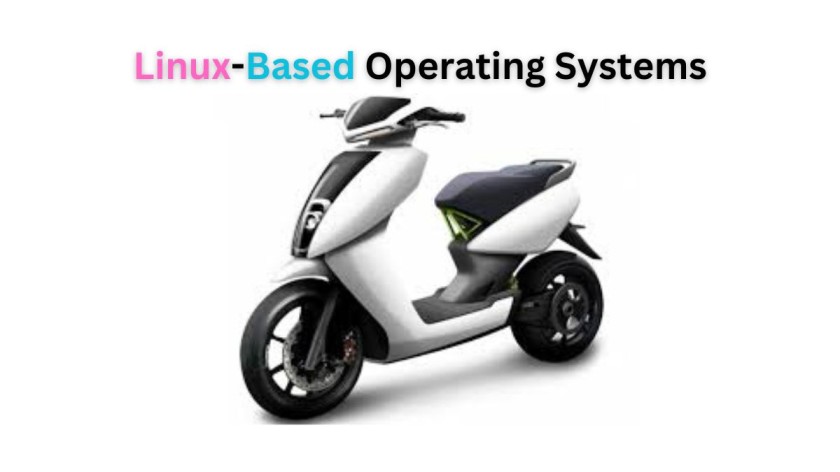
Linux-based operating systems are widely favored in a variety of electronic devices owing to their open-source nature, which allows for extensive customization and flexibility. These systems are highly adaptable and can be tailored to meet the specific requirements of electric scooters, providing robust performance and a wide range of customization options to suit various use cases.
Pros:
- Open-source and customizable: Users can modify the OS to fit their specific needs, adding or removing features as required.
- Strong community support: There is a large community of developers who contribute to and support Linux-based systems, providing extensive resources and troubleshooting help.
- Secure and reliable: Linux is known for its security and stability, making it a reliable choice for operating critical functions.
Cons:
- Requires technical expertise for customization: Customizing a Linux-based OS can be complex and typically requires a good understanding of software development.
- May have compatibility issues with some hardware: Not all hardware components may have drivers or support for Linux, which can limit its use.
(3) Android-Based Operating Systems:
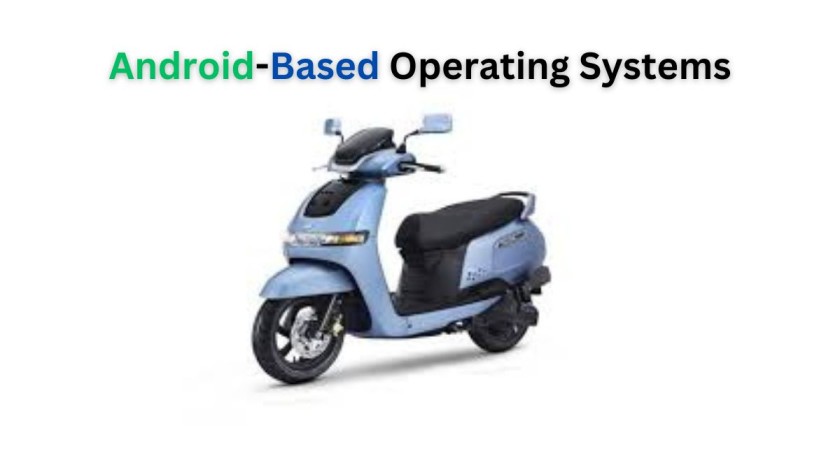
The Android-based operating systems utilized in electric scooters bring the familiarity and flexibility of smartphones to the world of personal electric transportation. These sophisticated systems provide a wide range of advanced connectivity features, including GPS navigation, Bluetooth functionality, and seamless app integration. By incorporating these features, the overall user experience is significantly enhanced, offering riders greater convenience, control, and access to valuable information while on the go.
Pros:
- User-friendly interface: Android OS is designed to be intuitive and easy to use, which can enhance the user experience for electric scooter riders.
- Advanced connectivity features: Android can easily integrate with various apps and services, providing features like GPS navigation, real-time tracking, and more.
- Wide range of apps and integrations: With access to the Google Play Store, users can download a variety of applications to extend the functionality of their scooters.
Cons:
- Can be resource-intensive: Android OS can require significant processing power and memory, which might affect the scooter’s performance if the hardware is not powerful enough.
- Security concerns if not regularly updated: Like any software, Android requires regular updates to patch security vulnerabilities, which can be a challenge in embedded environments.
(4) IoT Operating Systems:
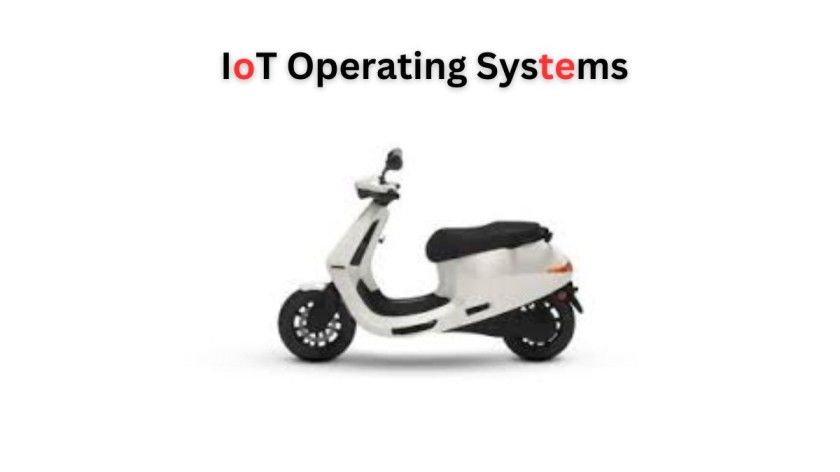
Internet of Things (IoT) operating systems play a crucial role in integrating electric scooters into the wider ecosystem of interconnected smart devices. These specialized operating systems facilitate various advanced functionalities such as remote monitoring, efficient fleet management, and comprehensive data analytics. As a result, they are highly suitable for supporting commercial and shared scooter services, offering enhanced operational control and valuable insights for businesses in this sector.
Pros:
- Enables advanced connectivity and monitoring: IoT OS can connect to the internet and other devices, allowing for remote diagnostics, updates, and real-time data collection.
- Ideal for fleet management: These systems can provide insights and control over large fleets of scooters, making them valuable for shared mobility services.
- Supports data analytics and reporting: IoT OS can gather and analyze data on scooter usage, performance, and maintenance needs, helping optimize operations.
Cons:
- Can be complex to implement: Setting up and managing an IoT OS can be complicated, requiring specialized knowledge and infrastructure.
- Higher cost due to advanced features: The additional features and capabilities of IoT systems can make them more expensive than simpler operating systems.
(5) Real-Time Operating Systems (RTOS):

Real-time operating systems (RTOS) are specifically engineered for applications that demand precise timing, high reliability, and deterministic behavior. They are commonly used in electric scooters to ensure that critical functions such as motor control, braking, and other safety systems respond instantaneously to user inputs, thereby enhancing overall safety, performance, and user experience.
Pros:
- High reliability and precision: RTOS are designed to perform tasks within a guaranteed time frame, which is crucial for safety-critical functions like braking and acceleration.
- Ideal for safety-critical functions: RTOS can ensure that essential operations are carried out promptly and correctly, reducing the risk of accidents.
- Efficient resource management: RTOS can manage the scooter’s resources effectively, ensuring that all critical tasks get the necessary processing power.
Cons:
- Less flexible than general-purpose OS: RTOS are specialized systems with limited flexibility for running non-critical applications or making significant changes.
- Requires specialized development expertise: Developing and maintaining an RTOS can be challenging and often requires a deep understanding of both the software and the hardware it controls.
Choosing the Right OS for Your Electric Scooter:
When selecting an operating system for your electric scooter, consider the following factors:
- Performance Needs: Assess the performance requirements of your scooter, including speed, battery management, and motor control. High-performance scooters may benefit from RTOS or embedded systems for precise control.
- Connectivity Features: Determine if you need advanced connectivity options like GPS, Bluetooth, and app integration. For instance, an Android-based or IoT OS might be ideal for scooters that require these features.
- Customization and Flexibility: Decide if you need a highly customizable OS or if a more rigid, proprietary system will suffice. Linux-based OS offers extensive customization, while embedded systems might be more locked down.
- Security Requirements: Ensure the OS provides adequate security features to protect against potential threats. Regular updates and a strong security framework are essential, especially for connected scooters.
- User Experience: Consider the ease of use and user interface, especially if the scooter will be used by a broad audience. A user-friendly interface, like those provided by Android-based OS, can enhance the rider’s experience.
Conclusion:
The operating system is a critical component of an electric scooter, influencing its performance, security, and overall user experience. By understanding the different types of OS available, you can choose the one that best meets your needs, whether you’re looking for high efficiency, advanced connectivity, or robust security. As technology continues to advance, we can expect even more innovative operating systems to emerge, further enhancing the capabilities of electric scooters.
Stay tuned to our blog for more insights into the latest developments in electric scooter technology and tips on getting the most out of your ride.
Read more- Gaming Capabilities: iPad vs Android Tablet
FAQ-
What is an operating system (OS) in an electric scooter?
An operating system in an electric scooter is the software that manages the hardware and software resources of the scooter. It controls various functions, including motor control, battery management, connectivity features, and the user interface.
Why is the operating system important for electric scooters?
The OS is crucial because it affects the scooter’s performance, security, and user experience. A well-designed OS ensures efficient operation, robust security, and a smooth, intuitive interface for the rider.
What are embedded operating systems in electric scooters?
Embedded operating systems are custom-built software specifically designed to manage the hardware functions of electric scooters. They are optimized for efficiency and real-time performance, making them ideal for tasks like speed regulation and battery management.
How do Linux-based operating systems benefit electric scooters?
Linux-based operating systems are open-source, customizable, and secure. They offer strong community support and can be tailored to meet the specific needs of an electric scooter, providing robust performance and reliability.
What advantages do Android-based operating systems offer for electric scooters?
Android-based operating systems bring a user-friendly interface and advanced connectivity features like GPS navigation, Bluetooth, and app integration. They allow users to enhance their scooter experience with a wide range of applications.
